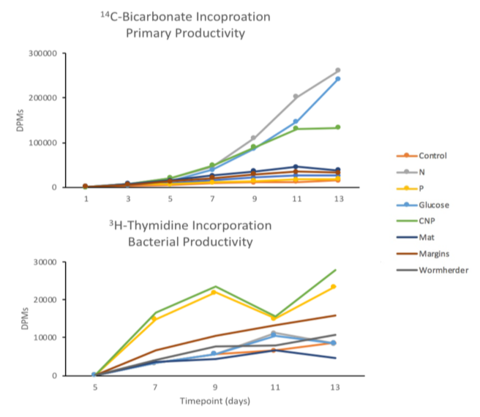
We are investigating the effect of increased connectivity among dry valley habitats on lake biodiversity and biogeochemistry in the Lake Ice Connectivity Experiment (LICE). Under a scenario of increased connectivity, we expect lakes to experience increased input from streams, aeolian sediments and lake margin soils, fluvially deposited algal/cyanobacterial mats, and in general, increased nutrient input. In year 1 of MCM5, surface water (from 6 m depth) of east lobe Lake Bonney was amended experimentally with nutrients (C, N, and P) and material from the surrounding basin (e.g., soil collected from Wormherder creek above Lake Bonney, wetted sediments from the margin soils at the SLIME site, and cyanobacterial mats from ponds in the basin) to approximate increased nutrient and material advection. The material was placed into 12,000 Dalton dialysis tubing and incubated in 10 L microcosms for 2 days to approximate a pulsed event. Lake water productivity, biogeochemistry, and biodiversity were monitored over the following two weeks.
An increase in primary and bacterial productivity was generally observed in the microcosms in response to the treatments, most significantly in the microcosms receiving P treatments and the lake margin soils. Microbial community composition remained relatively uniform among the treatments during the experiment, much of the variation seen is due to variations in the relative abundance of cryptophytes (classified by their plastic 16S rRNA gene sequence). However, bacterial diversity decreased significantly in the P and Margin treatments. These results are significant because we hypothesize that as the dry valley ecosystem continues to warm, lake levels will continue to rise and increased contact with these soils may result in a nutrient status change for these oligotrophic lakes that may significantly impact lake biogeochemistry and diversity. This experiment is being repeated this season in Lake Fryxell in conjunction with the tLICE experiment and a moat water bioassay.
